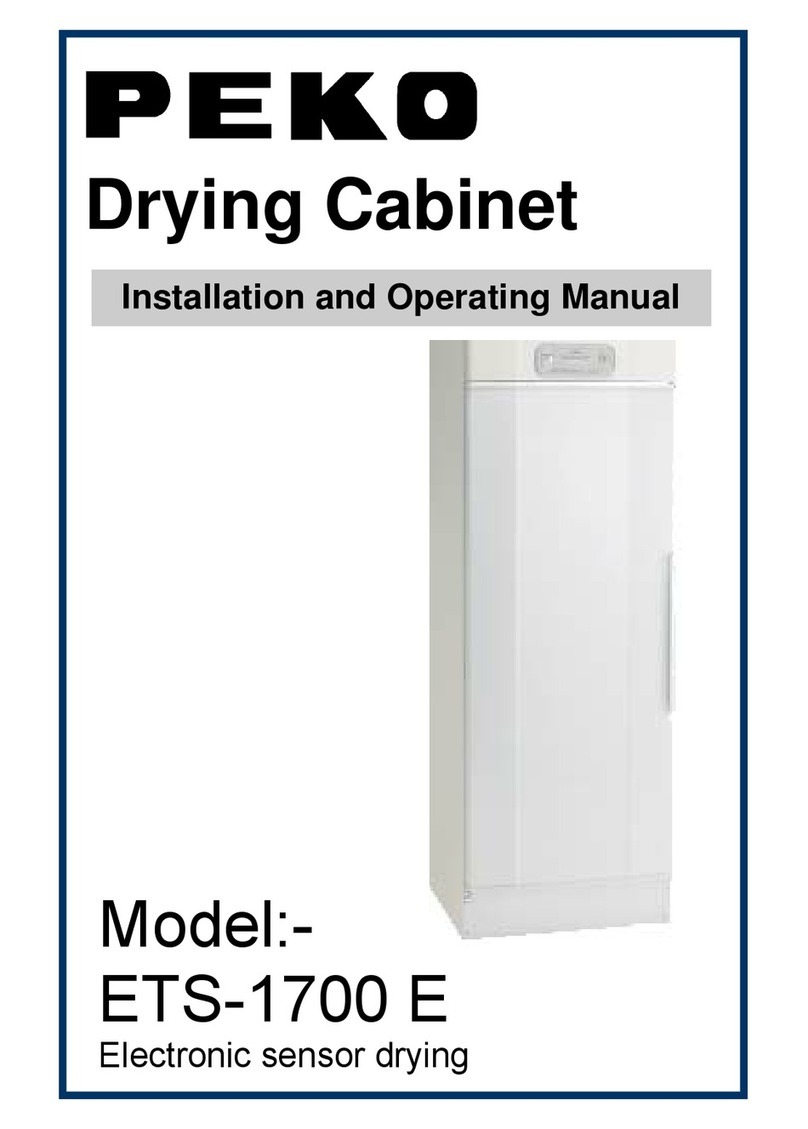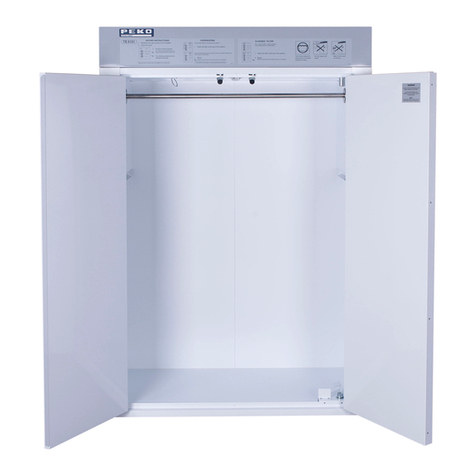InstallaonandOperangManual Page10
START-UP
WARNING! Read the safety advice on
page 3 before using the drying cabinet.
1. Check that the cabinet is firmly attached to the wall. See page 7 of this manual.
2. Check that no packaging material has been left behind.
3. Use a mild detergent with warm water and wash the inside and outside of the drying
cabinet. See the CARE section on page 14 of this manual.
HOW TO LOAD THE WASHING
The cabinet contains three sets of hanging rails.
Each set has 10 bars on which to hang the washing.
Hang items in the drying cabinet according to
how much space they require – not according to
their weight.
Fold back the middle and bottom sets of rails if
long garments are to be hung from the top set.
Hang gloves, hats, scarves and similar items on
the hangers attached to the inside of the door.
Slide the hanging rails forward to facilitate the
loading process. Push them back when not in
use and before closing the door.
Do not overload the drying cabinet. If you do, the
washing will become creased and dry unevenly.
Instead, leave space between the garments if
possible.
Avoid drying heavy items of clothing together
with lighter items as they have very different
drying times.
Make sure not to hang knitted items. These will
stretch as they are heavy when wet. Instead, lay
these items flat on top of the middle or lower set
of hanging rails.
For optimum efficiency, do not lay items flat on
the top set of hanging rails.
Avoid hanging textiles that are dripping or
soaking wet, as the drying cabinet is not
intended to collect large volumes of water. This
also leads to unnecessarily long drying times.
To avoid any potential transfer of colours, keep
light and dark/ coloured materials separate.
CAUTION! Do not dry articles that have
been previously cleaned in, washed,
soaked or splashed with petrol, or other
flammable/ explosive substances, as they
give off vapours that could ignite or
explode.
Drying tips:
Always follow the washing machine
instructions on garment care, if they are
provided.
If fabric softener or an antistatic product is
used, follow the manufacturer’s instructions
on their use.
Remove washing that is already dry. This
will reduce the drying time for the remaining
items.
Hang longer items nearest to the cabinet
walls and shorter ones towards the centre.
This allows for efficient airflow within the
cabinet and delivers the most effective
drying results.
Read this user manual before using
the drying cabinet for the first time.
This figure shows
how the air flows
within the cabinet.































